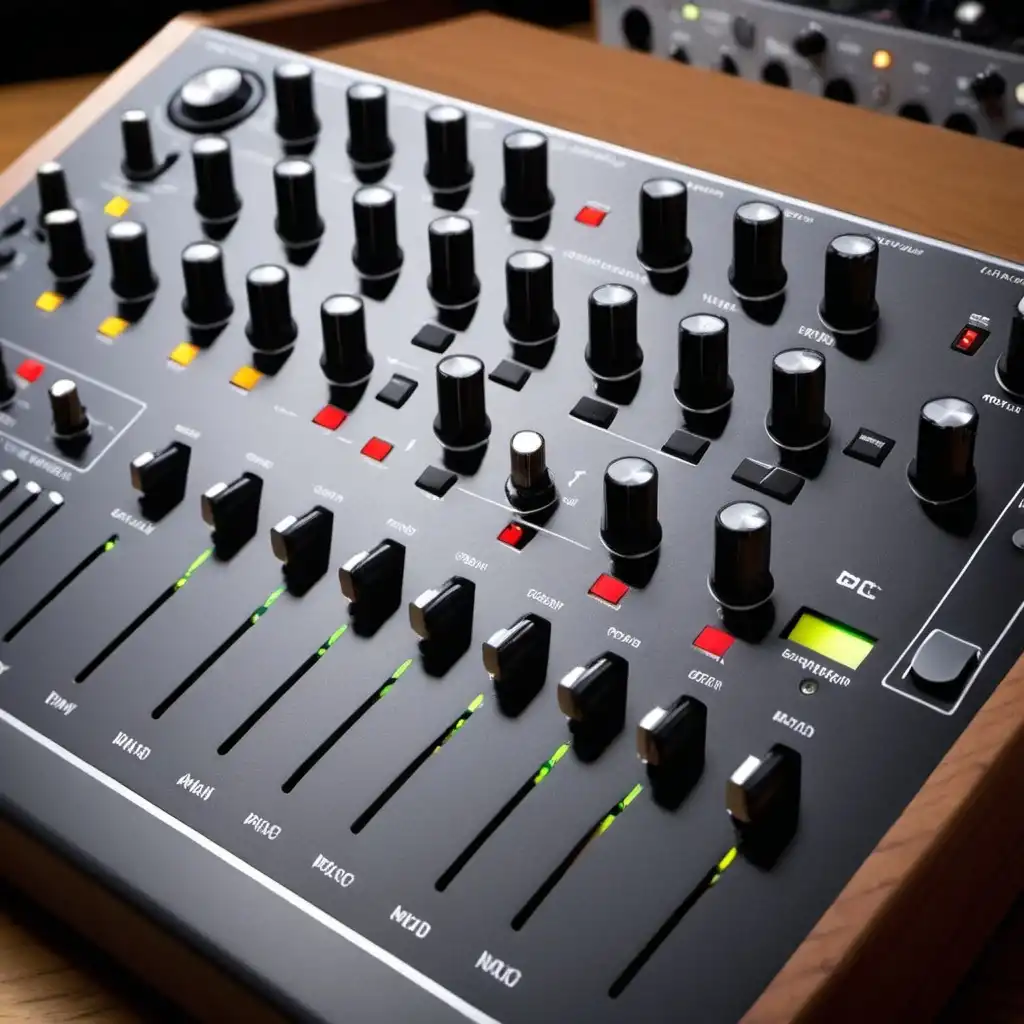图片提示词prompt
An audio interface is a crucial piece of equipment for recording and producing high-quality sound. It acts as the bridge between your audio sources (like microphones, instruments, or other audio equipment) and your computer. Here's a breakdown of its main functions and features:
Analog-to-Digital Conversion: The interface converts analog signals from microphones or instruments into digital signals that your computer can process. This is essential for recording high-quality audio.
Digital-to-Analog Conversion: It also converts digital audio signals from your computer back into analog form so you can hear them through your headphones or speakers.
Pre-Amps: Many audio interfaces have built-in preamps that boost the signal from microphones or instruments to a usable level before conversion.
Connectivity: Audio interfaces typically offer a range of inputs and outputs, including XLR, 1/4" (TRS or TS), MIDI, and sometimes even digital connections like ADAT or SPDIF.
Latency: Good audio interfaces have low latency, which means there is minimal delay between the input and the output. This is crucial for real-time recording and monitoring.
Phantom Power: For condenser microphones, which require external power, many audio interfaces provide phantom power (usually +48V).
Software Integration: Most interfaces come with or are compatible with Digital Audio Workstations (DAWs) and may include additional software for recording, editing, and mixing.
Popular audio interface brands include Focusrite, PreSonus, Universal Audio, and Behringer, among others. Your choice of interface will depend on your needs, such as the number of inputs/outputs you require, your budget, and the type of recording you plan to do.
音频接口是录制和产生高质量声音的关键设备。它充当您的音频源 (如麦克风、乐器或其他音频设备) 和计算机之间的桥梁。以下是其主要功能和特性的细分:
模数转换: 该接口将来自麦克风或乐器的模拟信号转换为计算机可以处理的数字信号。这对于录制高质量音频至关重要。
数模转换: 它还将计算机中的数字音频信号转换回模拟形式,以便您可以通过耳机或扬声器听到它们。
前置放大器: 许多音频接口具有内置前置放大器,可在转换之前将来自麦克风或乐器的信号提升到可用水平。
连接性: 音频接口通常提供一系列输入和输出









